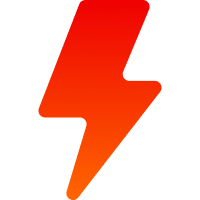Build Your Perfect Online Store: Step-by-Step Guide
Table of Contents
- Introduction
- Types of Stores
- General Store
- One Product Store
- Pros and Cons of General Store
- Pros and Cons of One Product Store
- Choosing a Store Name
- Setting up an Email Account
- Creating a Shopify Store
- Customizing the Theme
- Adding a Logo and Banner
- Optimizing for Mobile
- Adding Products and Collections
- About Us Page
- Removing "Powered by Shopify"
- Conclusion
How to Build Your Perfect Online Store
Building an online store can be an exciting endeavor, but it's important to approach it with a clear plan and strategy. In this article, we'll guide you through the step-by-step process of creating your own successful online store. From choosing the right type of store to customizing the theme and adding products, we'll cover all the essential elements for building a profitable online business.
Introduction
Before diving into the details, let's start with a brief overview of what's to come. Building an online store involves several key steps, including selecting the type of store, setting up a store name and email, creating a Shopify account, customizing the theme, adding a logo and banner, optimizing for mobile, and more. We'll explore each of these steps in detail to help you build your perfect online store.
Types of Stores
There are two main types of online stores: general stores and one product stores. Each type has its own advantages and considerations.
A general store offers a wide range of products and allows you to test different niches. It provides flexibility and the ability to advertise in multiple niches. However, it may require more effort to build a large email list and can be more challenging to establish a strong brand identity.
A one product store focuses on selling just one product. This approach allows you to build a brand around a specific product and target a specific niche. While it may require more effort to expand the store in the future, it offers the opportunity to create a strong brand identity and effectively market a single product.
Pros and Cons of General Store
Pros:
- Flexibility to test multiple niches
- Easier to build a large email list
- More stable in the long run
- Quick and easy to set up
- Beginner-friendly
Cons:
- Limited brand ability
- Increased competition
- Less focused marketing
Pros and Cons of One Product Store
Pros:
- Strong brand identity
- Targeted marketing
- Ability to create a niche store
- Opportunity to build customer loyalty
Cons:
- Limited product range
- Additional effort to expand the store
- Higher risk if the product doesn't perform well
Choosing a Store Name
When choosing a store name, it's important to consider a few key factors. For a general store, a broad and non-specific name is recommended. This allows you to easily switch between niches and products in the future without the need for rebranding. However, for a one product store, you may want to choose a name that reflects the specific product or niche you're targeting.
To find a suitable name, you can use online tools like Nameleaks.com to generate ideas and check domain availability. Once you have a name in mind, it's also advisable to register a business using that name to establish a more professional and credible presence.
Setting up an Email Account
Having a dedicated email account for your store adds professionalism and helps manage customer communications. You can create a new email account using a free service like Gmail or opt for a more professional option like Google Workspace (formerly G Suite). Consider your budget and preferences when deciding on the right email solution for your store.
Creating a Shopify Store
Shopify is a popular platform for building online stores. To create a Shopify store, sign up for an account and select a theme that suits your store's style and layout preferences. Shopify offers both free and paid themes, so choose one that fits your budget and requirements.
Customizing the Theme
Once you've selected a theme, customize it to match your brand identity. Upload your logo and banner images, choose suitable colors, and customize fonts and layouts. Pay attention to mobile optimization, as a significant portion of online shopping is done on mobile devices.
Adding a Logo and Banner
Your store's logo and banner play a crucial role in creating a strong visual brand identity. Use a design tool like Media Modifier or search for royalty-free images to create professional-looking logos and banners. Ensure that your logo has a transparent background and matches your store's color scheme.
Optimizing for Mobile
Given the increasing prevalence of mobile shopping, it's essential to optimize your store for a seamless mobile experience. Test your store's responsiveness and ensure that all elements, including images, buttons, and text, are properly scaled and displayed on mobile devices.
Adding Products and Collections
Next, start adding products to your store. Depending on your type of store, you can add multiple products across different niches (for a general store) or focus on a single product (for a one product store). Organize your products into collections to make it easier for customers to navigate and find what they're looking for.
About Us Page
Having an informative and engaging About Us page is crucial in building trust and establishing a connection with your customers. Share your brand's story, values, and mission to give customers a glimpse into your store's background and purpose.
Removing "Powered by Shopify"
To make your store appear more professional and independent, it's recommended to remove the "Powered by Shopify" text from the footer. You can do this by accessing the language settings in your Shopify admin panel and editing the text accordingly.
Conclusion
Building an online store requires careful planning and attention to detail. By following the steps outlined in this article, you'll be well on your way to creating your perfect online store. Remember to consider the pros and cons of different store types, choose a suitable store name, customize your theme, and optimize for mobile. With a well-designed store, quality products, and effective marketing strategies, you'll be on your way to e-commerce success.
Highlights:
- Understand the different types of online stores: general stores and one product stores
- Choose an appropriate store name and set up a dedicated email account
- Create a Shopify store and customize the theme to match your brand identity
- Optimize your store for mobile devices
- Add products and collections, and organize them effectively
- Craft an engaging About Us page to build trust with your customers
- Remove the "Powered by Shopify" text to give your store a more professional look
FAQs
Q: How do I choose the right type of online store for my business?
A: Consider your target audience, the products you want to sell, and your long-term goals. General stores offer flexibility and the ability to test multiple niches, while one product stores allow for a more focused branding strategy.
Q: Can I change my store name in the future?
A: While it's possible to change your store name, it can be a complicated process that involves rebranding and updating your website, domain, and marketing materials. It's best to choose a name that can adapt to different products or niches.
Q: Do I need a custom domain for my Shopify store?
A: While it's not necessary, having a custom domain (e.g., www.yourstorename.com) adds professionalism and credibility to your online store. You can purchase a custom domain through Shopify or a third-party domain registrar.
Q: How do I optimize my store for mobile devices?
A: Choose a mobile-responsive theme, test your store's appearance and functionality on different devices, and ensure that all elements are properly scaled and displayed on smaller screens.
Q: Can I add more products and collections in the future?
A: Absolutely! As your business grows, you can expand your product range and create additional collections to cater to different customer needs and preferences. Regularly updating your store with new products can help keep your customers engaged and encourage repeat purchases.



















